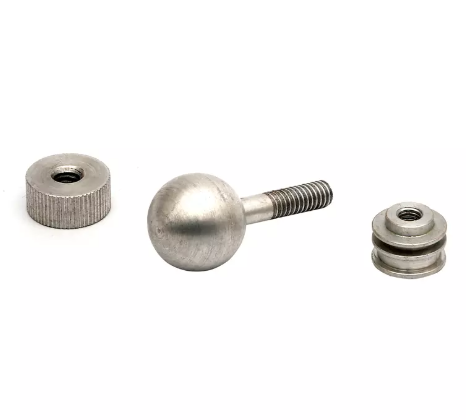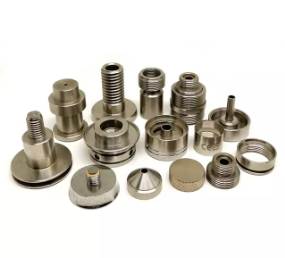Email: admin@yeeshine-tech.com WhatsApp: +86-13712868936
- All
- Product Name
- Product Keyword
- Product Model
- Product Summary
- Product Description
- Multi Field Search


Views: 0 Author: Site Editor Publish Time: 2025-03-17 Origin: Site











Choosing the right method for prototyping can be tricky. When is CNC machining the most effective? This question often arises for engineers aiming to balance speed, precision, and cost.
In this article, we'll dive into the best time to use CNC machining for prototypes. We will explore how CNC machining improves prototype quality and the advantages it offers for rapid prototyping.
You'll also discover how CNC machining stacks up against other prototyping methods and why it's a go-to for creating high-precision parts.
When evaluating the best time to use CNC machining for prototypes, it's essential to focus on its key advantages. CNC machining is well-known for its unmatched precision and accuracy, making it the perfect method for creating detailed, intricate prototype parts. With its ability to maintain tight tolerances, CNC machining ensures that each component meets exact specifications, which is crucial in industries where even minor variations can impact performance.
CNC machining's material versatility is another significant benefit. Unlike many other prototyping methods, CNC machining can handle a wide range of materials, including metals, plastics, and composites. This flexibility allows you to produce prototypes from materials that closely match those used in final production, giving you a more accurate representation of the end product.
Speed is another advantage of CNC machining for rapid prototyping. Once the design is finalized and programmed, CNC machining quickly executes the process, reducing the time required to produce prototypes. This efficiency enables faster iteration cycles, which is particularly valuable during product development, where frequent design adjustments are often necessary.
Consistency and repeatability are also essential benefits of CNC machining. The automated nature of the process ensures that every prototype is produced with the same high level of precision and quality. This is particularly valuable when producing multiple prototypes or scaling up to small-batch production. The ability to consistently replicate identical parts with minimal variation improves reliability and reduces the risk of errors or defects in future production runs.

Choosing the best time to use CNC machining for prototypes requires understanding the unique demands of your project and comparing it with other prototyping methods like 3D printing. Below are key situations where CNC machining is the most effective choice:
CNC machining is unmatched when precision is crucial. The technology is capable of achieving extremely tight tolerances, as narrow as ±0.001 inches. This makes CNC machining ideal for prototype parts that need to meet exact specifications, especially in industries such as aerospace, medical devices, and automotive manufacturing. In these fields, even the smallest deviations can significantly impact performance and safety, making CNC machining the best option for precision-critical prototypes.
One of the key advantages of CNC machining for rapid prototyping is its ability to work with a wide range of materials, including metals, plastics, and composites. Unlike 3D printing, which is often limited to certain plastics or resins, CNC machining can use materials that closely replicate those in final production. This ensures that the prototype not only looks like the final product but also behaves similarly in terms of weight, mechanical properties, and durability. This material flexibility makes CNC machining a more realistic and accurate prototyping choice for many industries.
CNC machining shines when prototypes need to undergo extensive functional testing. The high-quality surface finishes and precise dimensions that CNC machining provides make it ideal for testing parts under stress, heat, and mechanical conditions. Prototypes produced through CNC machining offer reliable and realistic data that closely reflects the performance of the final product. This makes CNC machining an essential choice when the prototype must be evaluated for functionality and reliability in real-world conditions.
While 3D printing excels at creating complex internal structures, CNC machining stands out in producing intricate external geometries, sharp edges, precise contours, and smooth surfaces. This subtractive manufacturing process allows for the creation of prototypes with fine details and smooth finishes that are challenging to achieve with additive methods. Industries such as consumer electronics and medical devices particularly benefit from CNC machining's ability to produce aesthetically pleasing and functionally precise prototypes that meet high standards of quality.

Although CNC machining offers many advantages for rapid prototyping, it's essential to understand its limitations. This helps in making well-informed decisions about when CNC machining is the best fit for your project.
One of the main drawbacks of CNC machining is its higher initial investment compared to other prototyping methods like 3D printing. The increased cost is mainly due to specialized tooling, programming, and machine setup. While CNC machining delivers high precision and accuracy, these benefits come at a premium, making it less ideal for simple, low-volume prototypes or early-stage concept testing, especially when working within tight budget constraints.
CNC machining is a subtractive manufacturing process, which means material is removed from a solid block to form the desired shape. This method often leads to significant material waste, particularly when complex designs require large amounts of material removal. The cost of this waste can be considerable, especially when working with expensive materials such as high-performance plastics or metals. Additionally, the environmental impact of this waste can be an important factor when sustainability is a priority in product development.
CNC machining excels at shaping exterior surfaces but faces challenges when it comes to creating intricate internal features. Unlike additive manufacturing techniques like 3D printing, which can build layers from the inside out, CNC machining has limited access to internal geometries. This limitation can be a hurdle for designs that require complex internal components, often necessitating the use of hybrid or alternative prototyping methods to fully meet the specifications of the prototype.
When choosing the best method for prototyping, it's important to understand the distinctions between CNC machining and 3D printing. Each technique offers its own set of benefits and limitations, making it suitable for different applications.
CNC machining and 3D printing are fundamentally different in their approaches to prototype manufacturing. CNC machining is a subtractive process where material is cut, drilled, or shaped from a solid block. This results in highly accurate, durable parts with superior surface finishes, making it ideal for precision prototype parts and functional testing. The subtractive nature of CNC machining ensures a high level of consistency, making it perfect for parts that require tight tolerances.
In contrast, 3D printing is an additive process that builds parts layer by layer from digital files. This approach excels at creating complex shapes and internal structures, which can be challenging to achieve with CNC machining. However, 3D printing can result in parts with weaker mechanical properties and surface finishes that may not be as smooth or durable as those created through CNC machining.
Despite the advantages of CNC machining, there are specific situations where 3D printing is the better option. For rapid prototyping in the early stages of design, where frequent changes are expected, 3D printing is an excellent choice. It allows for quick iteration with minimal setup costs, making it highly efficient for concept testing.
3D printing is also advantageous when creating highly complex designs, especially those featuring organic shapes or intricate internal features that are difficult or costly to produce with CNC machining. The layer-by-layer additive process makes it easier to manufacture prototypes with internal cavities or geometric complexity that would otherwise be challenging to achieve.
Furthermore, for projects with tight budgets, especially single prototypes or small production runs, 3D printing offers a more cost-effective solution. With its lower initial setup costs, it is an ideal option for startups or small businesses that may not have the resources for a CNC machining setup.
Selecting the right prototyping method is critical for successful product development. CNC machining is ideal when precision, tight tolerances, and durability are required. It excels in producing high-quality parts with complex geometries, making it perfect for functional testing and creating prototypes similar to final production pieces.
However, 3D printing is often more cost-effective for early-stage prototyping or when intricate internal structures are needed. By aligning the method to your project's specific needs, you can ensure efficiency and cost-effectiveness throughout the prototyping process.
CNC machining works well with a range of materials, including metals like aluminum and stainless steel, and plastics like ABS and polycarbonate, ideal for functional and aesthetic prototypes.
The machining time depends on design complexity. Simple parts may take a few hours, while more detailed or larger prototypes could take a day or more to complete.
Yes, CNC machining is highly efficient for small-batch production, providing high precision and consistency across multiple prototypes with quick design adjustments.